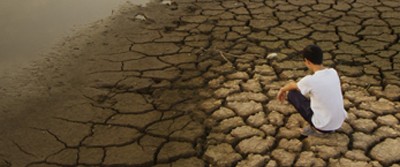Students Want to Learn More About Climate Change

By Iva Fedorka
Not long ago, most students at Granada Hills Charter High School didn’t use the recycling bins or understand how plastic waste contributes to greenhouse gas emissions. But California’s science standards are helping educators incorporate more relevant, hands-on lessons and instruction about the environment and climate change.
Teacher Education
About half of the new math and science teachers in California during the 2016-2017 school year started teaching without full state credentials. To help address this, the University of California (UC) and California State University (CSU) systems launched a “Climate Change Literacy Project.” These educational institutions prepare more than half of the state’s elementary and high school teachers and have decided to partner with scientists to help future teachers learn more about climate change.
Examples of the New Curriculum
Granada Hills chemistry teacher Jeanette Chipps knows firsthand about fueling inquisitive minds. Students may know about climate change as a broad topic but may not understand its science or history.
“They hear these things and they want to know why, they want to better understand it and they want to do something about it,” Chipps said. “It’s just about finding and then giving them the tools to do something about it.”
The Rialto Unified School District leaders revamped the whole high school science course pathway and extended the science requirement to three years instead of two, as required for admission to CSU or UC. The new courses include science-related issues and not the traditional focus on biology or chemistry alone. In one class, students learn about water as part of chemistry, biology, or engineering and review the environmental impact report for the creation of a new local flood detention basin.
Program Successes
Research suggests that students learn more when they practice science rather than just reading it from a textbook, said Bill Sandoval, a UCLA education professor who studies how children learn science.
“We want children to learn science concepts through investigating phenomena in the world,” Sandoval said.
Students may learn about plastic waste and water in several different classes. They learn about salt and plastic bonds in chemistry, create a website about historic U.S. water use in social studies, and use recycled materials to create artwork for a combined English/science assignment.
More Work Is Needed
Some instructors have resisted the new teaching methods, and the districts have invested heavily in professional development. The use of these new hands-on techniques and climate change lessons is still inconsistent. Teachers struggle with class time, their own reluctance to teach topics in which they lack expertise, and the shift from giving students information to helping them function as scientists.
Discussion Questions
- What are greenhouse gas emissions?
- What is a flood detection basin?
- What local climate change issues would make good discussion topics?
Vocabulary
- Curriculum
- Inquisitive